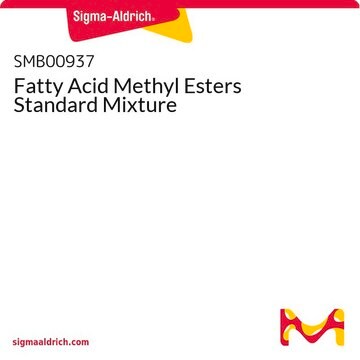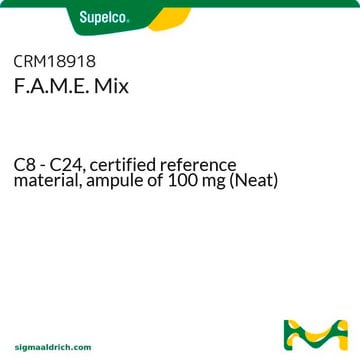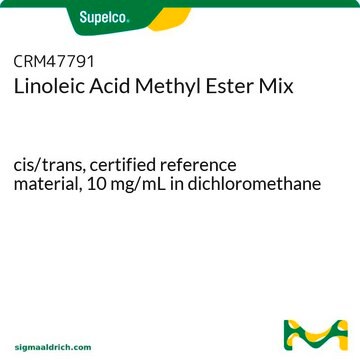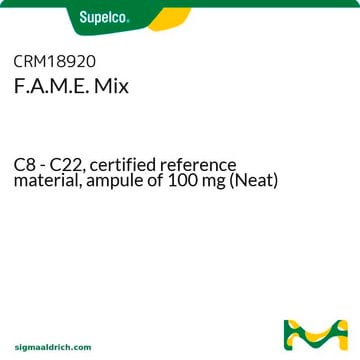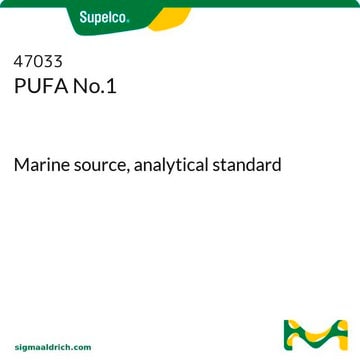CRM47885
Supelco 37 Component FAME Mix
certified reference material, TraceCERT®, in dichloromethane (varied conc.), ampule of 1 mL
About This Item
Recommended Products
grade
certified reference material
TraceCERT®
Quality Level
product line
TraceCERT®
form
liquid
CofA
current certificate can be downloaded
packaging
ampule of 1 mL
concentration
in dichloromethane (varied conc.)
technique(s)
HPLC: suitable
gas chromatography (GC): suitable
application(s)
food and beverages
format
multi-component solution
shipped in
dry ice
storage temp.
-10 to -25°C
General description
Check out our complete portfolio of Fatty acid methyl ester (FAME) reference material solution mixes
Application
Other Notes
Legal Information
Analyte
Application
related product
Signal Word
Warning
Hazard Statements
Precautionary Statements
Hazard Classifications
Carc. 2 - Eye Irrit. 2 - Skin Irrit. 2 - STOT SE 3
Target Organs
Central nervous system
Storage Class Code
6.1D - Non-combustible acute toxic Cat.3 / toxic hazardous materials or hazardous materials causing chronic effects
WGK
WGK 2
Flash Point(F)
Not applicable
Flash Point(C)
Not applicable
Choose from one of the most recent versions:
Already Own This Product?
Find documentation for the products that you have recently purchased in the Document Library.
Customers Also Viewed
Articles
This technical article will discuss GC Analysis of a 37-Component FAME Mix on Omegawax.
Protocols
GC Analyses of FAMEs by Boiling Point Elution
GC Analyses of FAMEs by Boiling Point Elution
GC Analyses of FAMEs by Boiling Point Elution
GC Analyses of FAMEs by Boiling Point Elution
Chromatograms
suitable for GCsuitable for GCsuitable for GCOur team of scientists has experience in all areas of research including Life Science, Material Science, Chemical Synthesis, Chromatography, Analytical and many others.
Contact Technical Service
